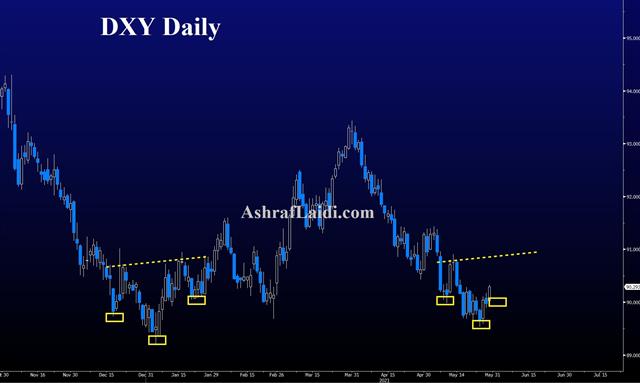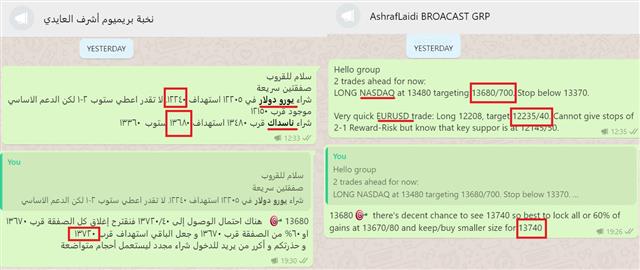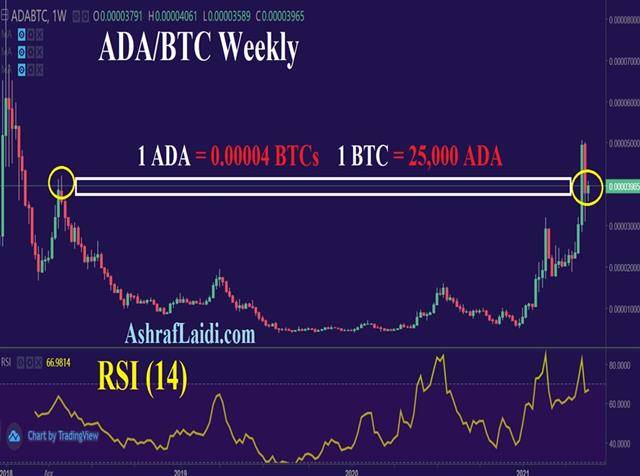Intraday Market Thoughts Archives
Displaying results for week of May 23, 2021Inflation Next, Yen Crosses & Make a Move

GBP/JPY is flirting with the 2018 high after a strong climb on Thursday. If it can breach that level, the pair would touch the highest since July 2016.
GBP/JPY steadily climbed alongside stocks from late 2020 through February but has largely consolidated since. It has now broken out this month and and that's a positive sign for it and correlated risk trades.
EUR/JPY also made a move on Thursday to the highest since Feb 2018 and has risen in four of the past five weeks as Europe emerges from the pandemic much faster than Japan, which is struggling with vaccinations.
Even CHF/JPY is surging and that price action indicates that the yen is quickly reassuming its traditional spot as the funding currency. At the same time, we can't rule out that dollar liquidity issues and month end are exaggerating this move.
US economic data offered little market direction but was indicative of an economy that continues to recover. Initial jobless claims fell to 406K from 425K expected and will continue to fall in the weeks ahead as states cut extra aid programs. Core durable goods orders were also strong, rising 2.3% compared to 1.0% expected. Finally, the second look at Q1 GDP was in line with the +6.4% consensus but the underlying numbers were a reminder that inventory rebuilding will be an ongoing tailwind.
Data will certainly be in focus on Friday, with the US PCE report out at 1230 GMT. The Fed's preferred measure of inflation – PCE core – is forecast to jump to 2.9% from 1.8% and if it does, that will be the highest since 1994 in something that's sure to drive headlines. However so long as it's near consensus, the market will shrug that off. Moreover, we've highlighted how high prints have led to USD spikes that are faded in the following days.
Note that Monday is a holiday in the US and that markets will thin out early ahead of the long weekend.Dollar Rebounds, Key Data Next

Reblancing and flow models suggested US dollar buying into month end and that may be what we saw on Wednesday as the dollar held a strong bid despite quiet trading in stocks and fixed income. The euro and Canadian dollar were hardest hit, falling more than 50 pips but the move was broad based. More evidence for flows as the driver was a particularly strong move into the London fix and at the London close.
Those will be times to watch again in the day ahead (1500 GMT and 1600 GMT) with US desks aiming to square books ahead of the long weekend.
Data is also likely to play a part in trade in the day ahead. Initial jobless claims are expected to continue lower, hitting 425K from 444K as the steady improvement continues. At the same time as that release, US durable goods orders are forecast to rise 0.8% and core orders up 1.0%. There will also be the second look at Q1 GDP and pending home sales to consider.Demand Tapped out?

Where the US housing market goes will be a critical input for US growth this year and beyond. Americans are famous for taking home equity loans and the construction sector can be an major tailwind.
So is demand tapped out? No.
Price is the ultimate measure of demand and the median new home sales price was up 20.1% y/y. More telling may be a long series of anecdotal reports from home builders who are struggling with supply bottlenecks and unexpected commodity price increases.
Typically, new homes are sold on spec at agreed-on prices 1-2 years before the final product is delivered. That leaves builders with all the exposure to commodity prices – namely lumber. Since prices have been flat for much of the past decade, that's usually something that can be absorbed into margins. This year though prices of lumber have quadrupled and that's left homebuilders in a bad spot.
Rather than doubling down, trying to hedge or guessing at prices, many are opting not to sell the homes until they're nearly completed. So construction is continuing to boom but the 'sales' are being pushed further into the cycle.
This is an other example of how bottlenecks are making it tough to gauge just how strong the economy is.Inescapable USD Pattern

A pattern continues to repeat in US dollar trading. Positive headlines on economic data give it a lift and then it slowly bleeds the gains away. We have seen it three times now with CPI, the Fed minutes and most recently with the Markit PMIs. The unwind from the latter began on Monday as the dollar sagged on a positive risk tone' yields remain stubbornly low. Sparking some dollar outflows is that global covid cases are turning lower, including in India and Brazil. We're still in the timeframe where the US is open and most of the world is shut, but that line will blur imminently.
One spot to watch particularly closely is oil. An Iran deal could be struck as early as today but it's likely priced in. Crude has rallied hard in the past two days after three days of selling on Iran headlines. The focus is increasingly shifting to the demand side and the likelihood of a boom in automobile driving in the months ahead followed by a resumption of business travel later in the year.
Oil isn't necessarily a great economic barometer because OPEC+ can change everything but it's key to the inflation debate. A further leg higher in crude would signal a new phase in price hikes that could shake global central bankers from their dovish perch.
Bank of Canada governor Tiff Macklem has already seen enough. On Monday, he explicitly said that tapering is the right move for the economy. The loonie has been the best performer so far this year and it's not tough to see why: We're in the beginning of the economic cycle and commodities have boomed.
Canada was on holiday Monday but will return to a busy day of trading on Tuesday. US data includes a series of home prices indexes and new homes sales along with the Richmond Fed and consumer confidence.Cardano's Outperformanceتفوق كاردانو
My latest video on how Cardano is quietly outperforming Bitcoin & Ethereum ماذا يعني تفوق كاردانو على بتكوين و إثيريوم؟
Data Driven Swings

There are long periods in FX trading where nearly all data is second tier; when the market settles on a narrative and currencies grind along in trends or sideways. This isn't one of those times.
A series of US economic data releases this month show a market that is struggling to understand what's happening with jobs, inflation and the economy as a whole. On Friday the Markit US PMIs hit records led by services up to 70.1 compared to 64.4 expected.
That sparked another re-think on the path of Fed rates and the strength of the US economy, sending the dollar higher. We've seen similar pops on CPI and the Fed minutes fade and that's probably the trade once again but if we see this kind of persistent strength backed up by jobs data, it will eventually get the Fed's attention.
The larger lesson is that all data is in play right now. There's no trading playbook for exiting a pandemic, especially with ultra-loose fiscal and monetary policy. There are persistent signals from bonds that genuine inflation isn't coming but if there were ever a time for bonds to be wrong, this would be it.
Meanwhile, the crypto market continues to be extremely volatile. Bitcoin failed at the retest of last week's breakdown at $42,500. It plunged on the weekend to $33,600 in a move that helps to confirm last week's breakdown.
CFTC Commitments of Traders
Speculative net futures trader positions as of the close on Tuesday. Net short denoted by - long by +.
EUR +100K vs +94K prior
GBP +25K vs +28K prior
JPY -51K vs -42K prior
CHF -4K vs -3K prior
CAD +46K vs +39K prior
AUD +3K vs -2K prior
NZD +8K vs +9K prior
The moves are modest this week but there's a steady trend towards selling the US dollar and yen that's been ongoing for weeks. The big mover though is CAD, which was at +16K just three weeks ago. The market is starting to believe in the strength of commodities and the reopening narrative.







